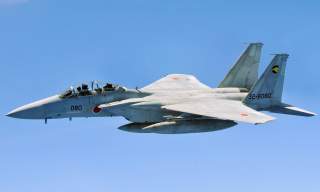How to Make Japan's Military Great Again
Can the Self-Defense Forces’ (SDF) force level and structure sufficiently cope with the increased defense capability?
The development of these types of technologies will take a very long time and are not readily available. However, the purchase of existent advanced weapon systems can be a quicker remedy. The recent decision of acquiring two Aegis Ashore systems, which can cover the entire Japanese homeland, will reduce the current burden of MSDF for the ballistic-missile defense operation. The Aegis Ashore systems will be run by the GSDF, but the first site will become operational in 2023.
Faced now with the expansion of Chinese naval-and-air capabilities, Japan needs to increase its own naval-and-air power, but with the current or even further decreased size of the SDF manpower due to the current shortage of enlisted (lower) rank personnel and the expected massive demographic decline. The new NDPG must address this challenge and provide the solutions. The percentage of SDF force structure among the three branches (60 percent for the GSDF, 20 percent for the MSDF, and 20 percent for the ASDF) has been remarkably stable since the mid-1980s, according to the data provided in the previous annual defense white papers. This must change now, and the rebalancing in the SDF manpower has to become a major policy option.
According to the recent media report, Japan is considering a concept of “cross service” which allows SDF personnel to work across three branches. Currently the MSDF and ASDF have 481 and 392 bases/facilities on land and have been using their own personnel for guarding these facilities. Based on the cross service, the GSDF will be able to take over while the MSDF and ASDF can assign more personnel to areas in greater need. This will be a good start and it will become necessary to expand the areas of cross service (e.g., on-land transport, ISR, missile defense, cyber, space and electronic warfare).
Implications to the U.S. Strategy toward the Indo-Pacific
In the past several years, there have been growing debates on how the U.S. should respond to the Chinese military expansion, and three schools of thought have been competing: (1) a stepping up by the U.S.; (2) a U.S. withdrawal from Asia; and (3) capabilities building of Chinese neighbors. Whether Japan will succeed in rebalancing the SDF manpower will be an important factor to this debate. If Japan fails to adjust to its demographic challenge, Japan might not be able to maintain either increase in the defense capability, and would then further rely on the United States for its security. But the U.S. military also has its own mismatch problem between manpower and growing operational demands, as multiple accidents recently occurred in the Indo-Pacific. How would the U.S. respond to possible consequences if Japan fails to rebalance the SDF manpower? The new NDPG will be published in December, and it is certain that U.S. policymakers will be paying close attention.
Dr. Aki Nakai is an adjunct faculty in the Pardee School of Global Studies at Boston University and the Political Science Program at Lesley University. His research interests lie in the intersection of international security and politics of the Indo-Pacific region.
Image: Wikipedia

